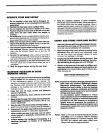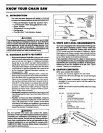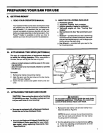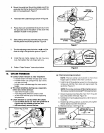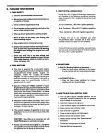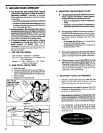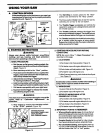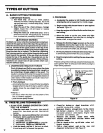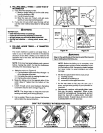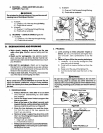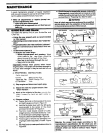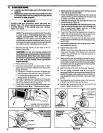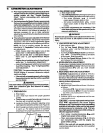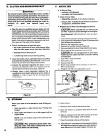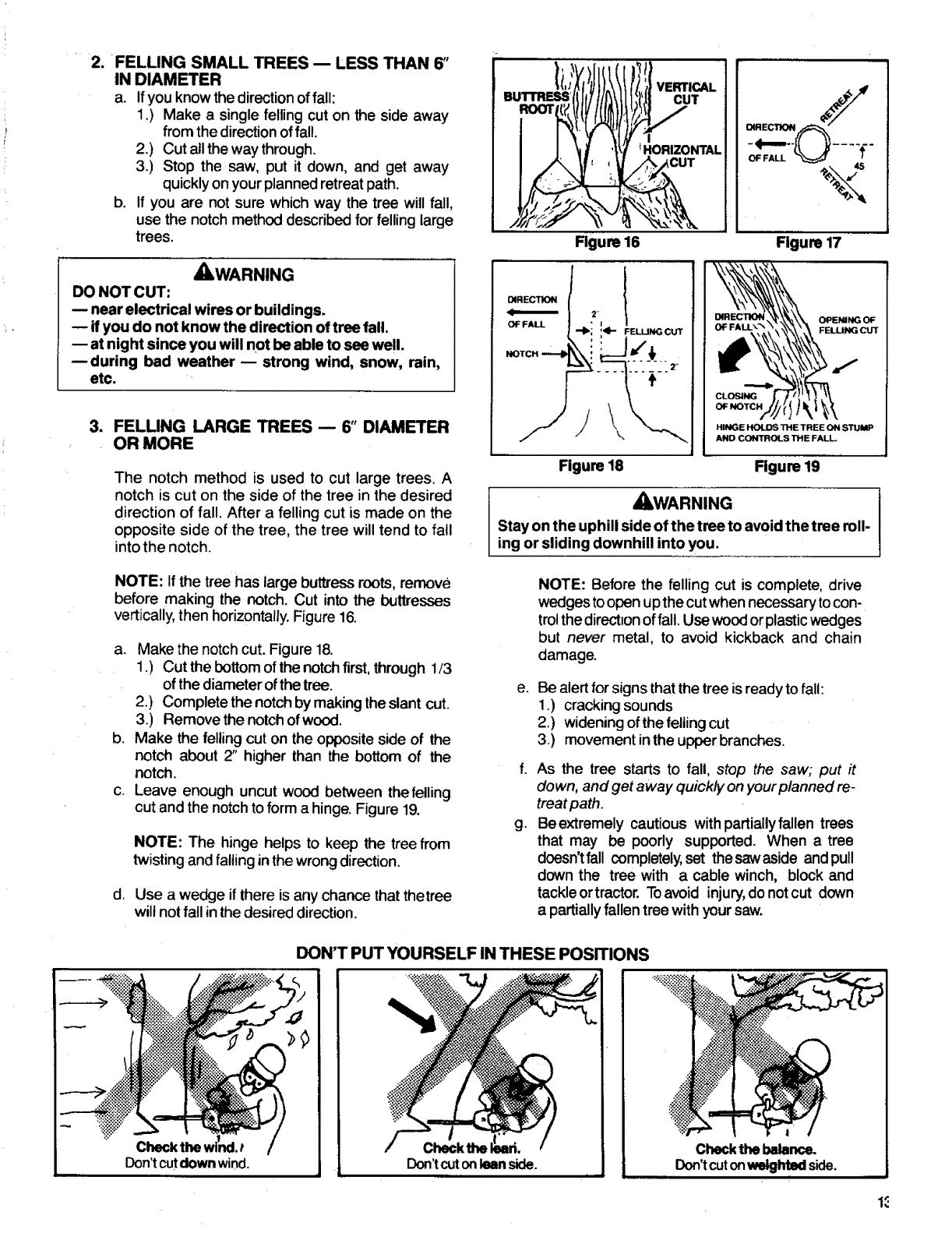
2. FELLING SMALL TREES m LESS THAN 6"
IN DIAMETER
a. Ifyou know thedirectionoffall:
1.) Make a single fellingcut on the side away
from thedirectionoffall.
2.) Cut all theway through.
3.) Stop the saw, put it down, and get away
quicklyonyourplannedretreat path.
b. If you are not sure which way the tree willfall,
use the notch method describedfor fellinglarge
trees.
_,WARNING
DO NOT CUT:
m near electrical wires or buildings.
ifyou do not know the direction of tree fall.
m at night since you will not be able to see well.
mduring bad weather -- strong wind, snow, rain,
etc.
3. FELLING LARGE TREES -- 6" DIAMETER
OR MORE
The notch method is used to cut large trees. A
notch is cut on the side of the tree in the desired
direction of fall. After a felling cut is made on the
opposite side of the tree, the tree will tend to fatl
into the notch.
NOTE: If the tree has large buttress roots, remove
before making the notch. Cut into the buttresses
vertically, then horizontally. Figure 16.
a. Make the notch cut. Figure 18.
1.) Cut the bottom of the notch first, through 1/3
of the diameter of the tree.
2.) Complete the notch by making the slant cut.
3.) Remove the notch ofwood.
b. Make the felling cut on the opposite side of the
notch about 2" higher than the bottom of the
notch.
c. Leave enough uncut wood between the felling
cut and the notch to form a hinge. Figure 19.
NOTE: The hinge helps to keep the tree from
twisting and falling in the wrong direction.
d. Use a wedge if there is any chance that thetree
wiltnot fall in the desired direction.
BUTrRESS
ROOTt
VERTICAL
CUT
tHORIZONTAL
Figure 16 Figure 17
DIRECTION
OF FALL
FELUNG CUT
\
J
Figure 18 Figure 19
OPENING OF
FELUNI3i CUT
HINGE _ THE TREE 04_STUMP
AND CONTROfLS "rilE FALL
,AWARNING
Stay on the uphill side of the tree to avoid the tree roll-
ing or sliding downhill into you.
NOTE: Before the felling cut is complete, drive
wedges toopen up the cut when necessary tocon-
trol the direction offall. Use wood or plastic wedges
but never metal, to avoid kickback and chain
damage.
e.
g.
Be alert forsigns thatthe tree is ready to fall:
1.) cracking sounds
2.) wideningofthefelling cut
3r) movement in theupper branches.
As the tree starts to fall, stop the saw; put ff
down, and get away quickly on your planned re-
treat path.
Be extremely cautious with partially fallen trees
that may be poorly supported. When a tree
doesn't fall completely, set the sawaside and pull
down the tree with a cable winch, block and
tackle or tractor. Toavoid injury, do not cut down
a partially fallen tree with your saw.
DON'T PUT YOURSELF IN THESE POSITIONS
Don't cutdown wind.
Check the I
Don'tcut onlean side.



